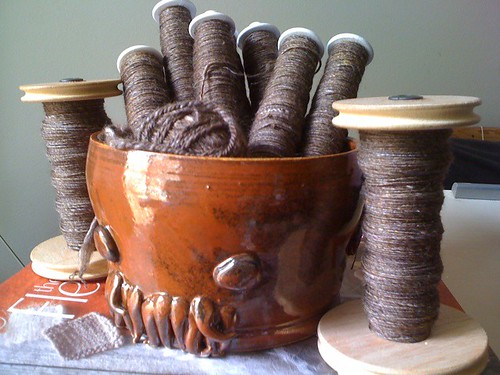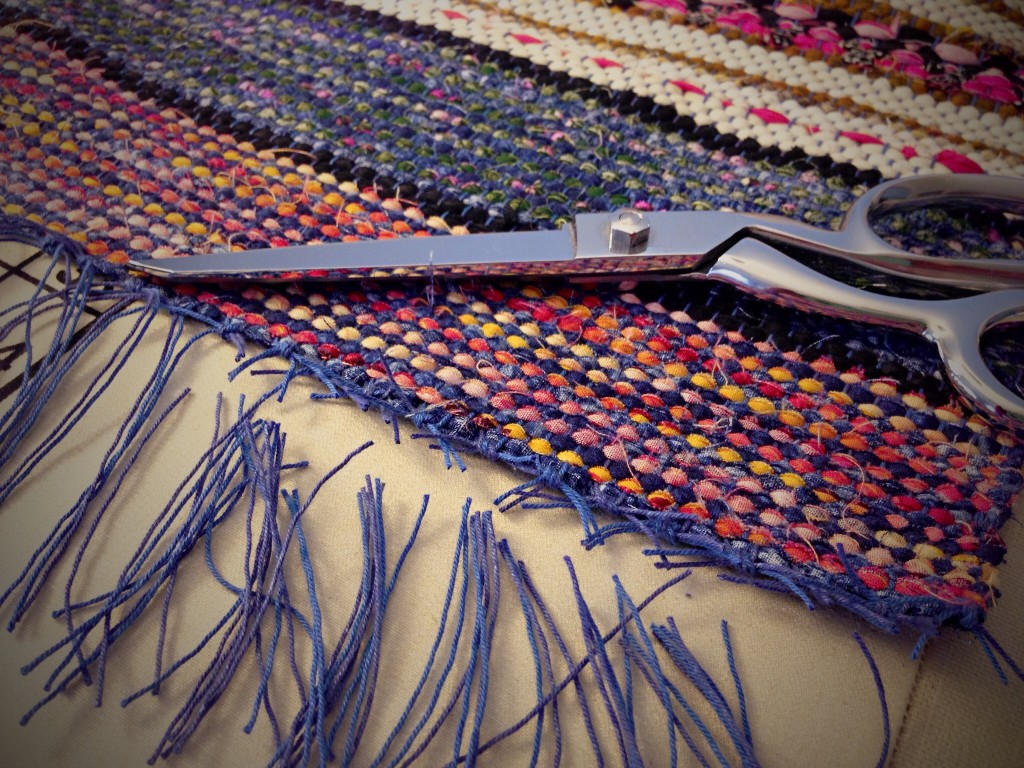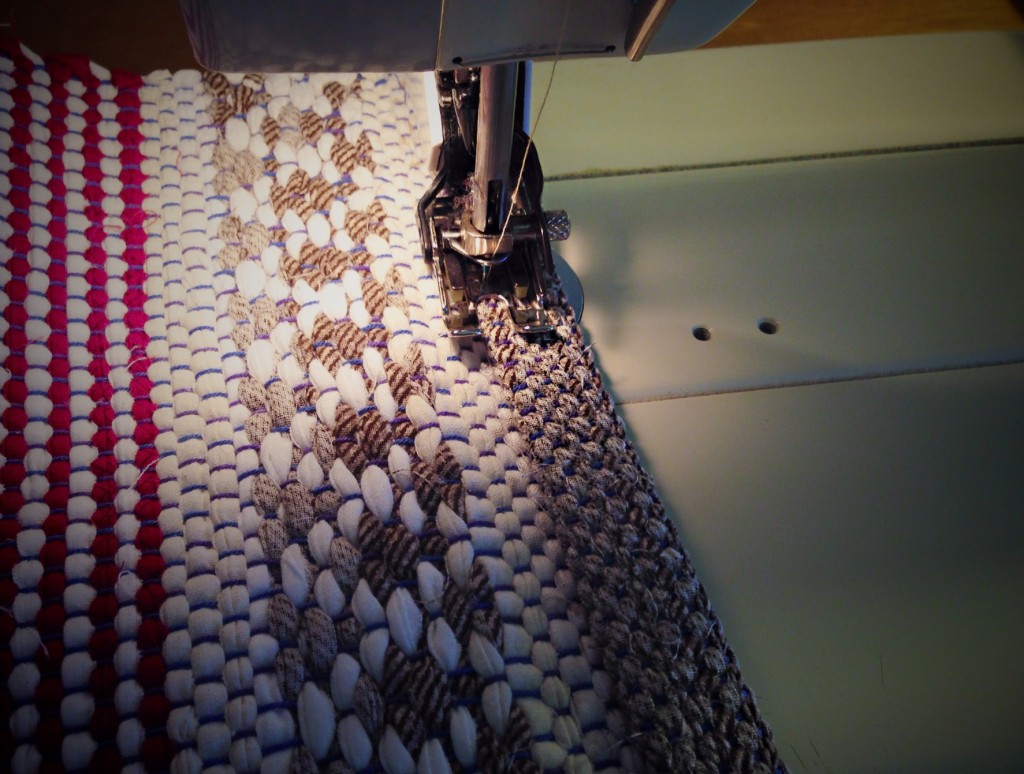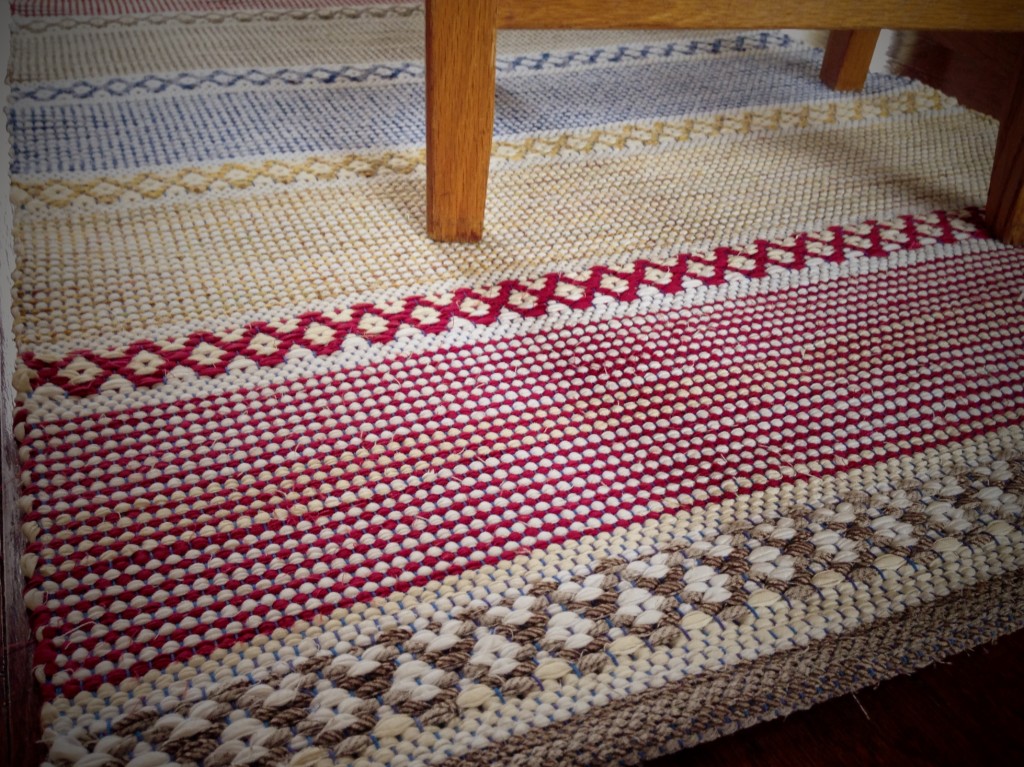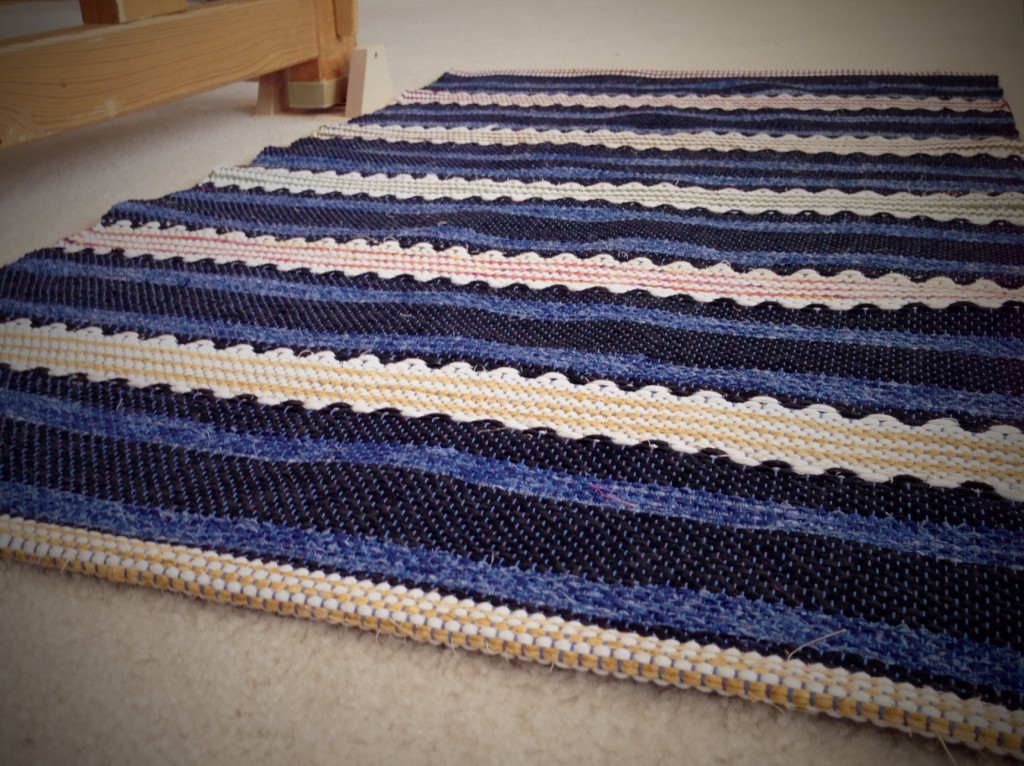-÷итатник
јжурный жилет крючком. 1. 2. 3. 4. 5. ...
Ёлегантный жилет крючком. - (0)Ёлегантный жилет крючком. 1. 2. 3. 4.
∆илет с накладными карманами. - (0)∆илет с накладными карманами. 1. 2. 3. 4.
—тильный жилет из круглых двуцветных мотивов. - (0)—тильный жилет из круглых двуцветных мотивов. 1. 2. 3. 4. ...
јжурный жилет красивым узором. - (0)јжурный жилет красивым узором. 1. 2. 3.
-–убрики
- детское:плать€,сарафаны (1326)
- јвтор Juliet73 (4)
- ¬€зание ≈вгении олыбелкиной (3)
- в€зание:прихватки,коврики (847)
- пэчворк журналы (117)
- Anaska_Crochet (2)
- јксессуары,украшени€ (132)
- јрт-салон —ветланы обзевой (7)
- варежки,перчатки (183)
- виды прикладного искусства (70)
- ¬€зание ¬алентина Ћитвинова (1)
- ¬€зание ¬€заный стиль (6)
- ¬€зание 545meri (2)
- ¬€зание Bhuf (9)
- в€зание elenako8005 (4)
- ¬€зание sewer1991 (23)
- ¬€зание tania knutareva (3)
- ¬€зание Ѕеспичанской “ать€ны (4)
- ¬€зание ¬алентины ƒь€ченко (Ѕабинова) (19)
- ¬€зание »рины »щенко (2)
- ¬€зание узнецовой (1)
- ¬€зание Ћюбови ќбуховой (5)
- ¬€зание марины копт€евой (17)
- ¬€зание ћарины ћорозовой (6)
- ¬€зание на вилке (40)
- ¬€зание Ќатальи јгасиевой (1)
- ¬€зание Ќатальи улик (1)
- ¬€зание Ќатальи —едовой (1)
- ¬€зание ѕасашкова Ќаталь€ (1)
- ¬€зание с отовой Ќатальей (4)
- ¬€зание с ошкиной (0)
- в€зание с ћалевич (21)
- в€зание с мехом (224)
- ¬€зание —ветланы «аец (2)
- в€зание —еверюхиной (2)
- ¬€зание —олохиной (5)
- ¬€зание “ать€ны —оповой (2)
- ¬€зание ўеглова Ќадежда (1)
- ¬€зание юли€ корнева (5)
- ¬€зание: пончо,накидки пелерины (741)
- в€зание:береты,шапки (1446)
- в€зание:кардиганы,жакеты теплые (1570)
- ¬€заные куклы (266)
- в€заные пледы,покрывала (1053)
- в€заные сумки (258)
- в€заные тапки (352)
- √анутель (10)
- детское: теплые шапки (1213)
- детское:комплекты,комбезы,штаны (384)
- детское:кофточки,пальто,пончо (1781)
- детское:пинетки,носочки (175)
- детское:топы ,туники,жилеты (237)
- детское:шл€пы,панамки (318)
- дет€м мультики,стихи (118)
- дл€ днева информаци€ (238)
- ƒл€ дома своими руками (236)
- дл€ мен€ (300)
- ≈лена Ѕукаева (Ћендова) (0)
- жилеты и топы (913)
- журналы по в€занию (222)
- здоровье (182)
- зонтики (101)
- итайска€ вышивка (37)
- оробочки,шкатулки,картон (45)
- кофты (5767)
- кулинари€ (479)
- ћамочкин канал (4)
- мои шапки (302)
- мотивы,узоры,цветы (1799)
- пальто женское (481)
- плать€ сарафаны (1406)
- плетение из газет (130)
- пэчворк (1457)
- ѕэчворк-видео (162)
- пэчворк-сумки (178)
- разное (33)
- рукоделие (562)
- сад-огород (124)
- салфетки (323)
- ссылки (14)
- туника (1165)
- тунисское в€зание (37)
- фотошоп (27)
- ÷еркви ,монастыри,храмы (53)
- шали,шарфы,палантины (1317)
- шитье-плать€ ,халаты,туники (927)
- юбки (522)
-—сылки
-ћетки
-ћузыка
- Chris Isaak Chris Isaak " Return to Me "
- —лушали: 4936 омментарии: 0
- Ћюсьен Ўамбалани- сказка!!!
- —лушали: 52615 омментарии: 2
- »рина Ѕилык " Ќе така€ как все"
- —лушали: 3374 омментарии: 4
- GuitarInstrumental Hit / Johnny
- —лушали: 20170 омментарии: 4
- Deuter - Silent Bay
- —лушали: 3320 омментарии: 0
-¬сегда под рукой
http://www.liveinternet.ru/users/tatmel/post334232109/
-ѕоиск по дневнику
-ѕодписка по e-mail
-ѕосто€нные читатели
-—татистика
“кать из... косы от полос+ |
“кать из... косы от полос
»де€ из интернета. ѕлести косу из полос от старой одежды и так ткать. ѕолучаетс€ толстое полотно.
========================
https://www.pinterest.com/pin/105905028714631177/
Author: Laura Gummerman Budget: $$ D.I.Y. Project Home Decor Kitchen
Supplies:
Step One:
Step Two:
Step Three: On each of the short ends of your cardboard, start 2" from each end and mark 2" long lines every 1/2". Use scissors to cut 2" slots at each mark.
Step Four:
Step Five:
Step Six:
Step Seven:
====================================================
https://www.pinterest.com/pin/114701121736013185/
https://www.pinterest.com/pin/333618284874714267/
https://www.pinterest.com/pin/199284352235425012/
https://www.pinterest.com/pin/308355905709285257/
https://www.pinterest.com/pin/267119821622966371/
https://www.pinterest.com/pin/526358275172700648/
https://www.pinterest.com/pin/140526450846475994/
https://www.pinterest.com/pin/439030663651827121/
http://www.ehow.com/way_5179503_braided-rag-rug-instructions.html
https://www.pinterest.com/pin/210543351307262365/
From Rags to Riches
| via |
 |
| via |
 |
| via |
 |
| via |
| via |
https://www.pinterest.com/pin/418764465322567429/
1.

2.

3.

.

6.

============================================
7.

Rag Rugs 1
Thursday, August 23rd, 2012
Rag Rugs 2
=======================================
https://www.pinterest.com/pin/210543351307262365/
==========
========================
=========================================
=========================
===================
Weaving with Handspun
"Tweed Spice" from my Hiker's Waistcoast.
I know from weaving my Zippered Pouch
Where the Weft Is Vulnerable
- By Karen
- June 10, 2014
- 4 Comments
The outside rows of a rag rug are vulnerable. Twining secures the weft, making it a good way to begin and end a rag rug. I cut a length of rug warp thread two and a half times the width of the rug. Starting on the left side, with the length of thread folded in half, the top half goes under, and the lower half goes over each successive warp end.
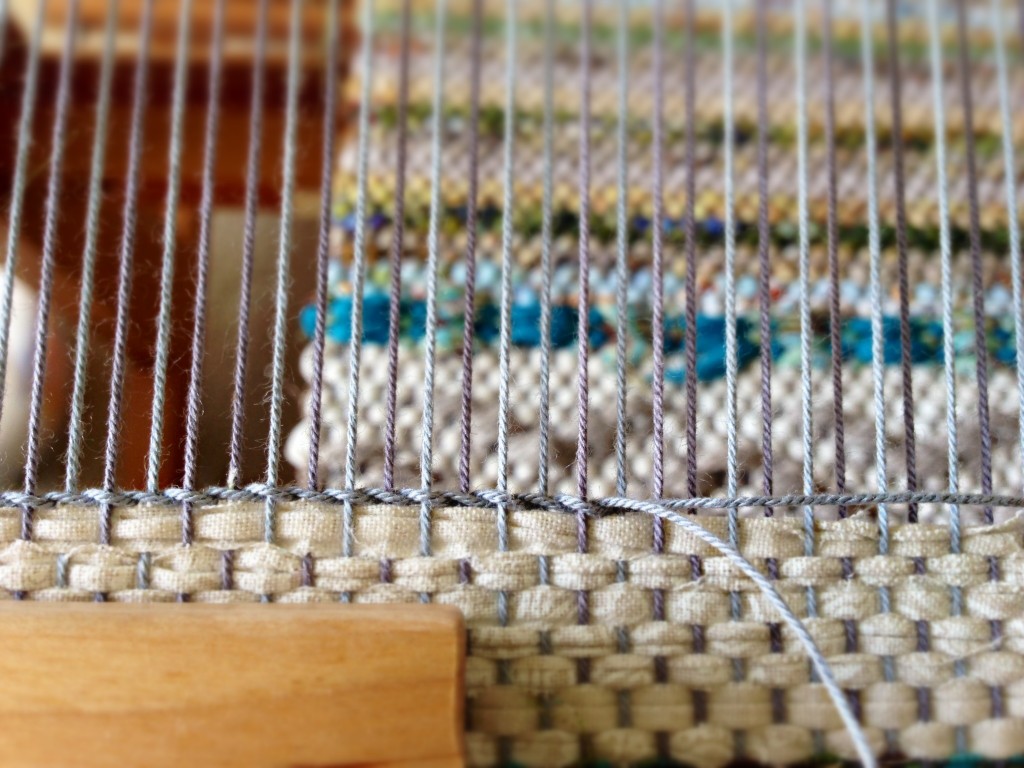
Twining separates the warp ends evenly and secures the weft. At the end of the row I weave in the ends, and then, beat twice with the beater to push the row of twining firmly into place.
Is it really necessary to secure the weft? When the rug is under tension on the loom it seems like everything is holding together just fine. It is tightly woven, with the weft firmly packed in. Yes. It is necessary. The rug will start falling apart the minute it is cut from the loom. Twining keeps the most vulnerable place of the weaving intact.
Faith is the vulnerable spot where you allow yourself to be loved by God. Wrapped in his mercy and his grace, our weakest point is no longer our entry into failure, but where we are kept in his security. Your faith is the point of access, the opening, for your maker to show his strength to make you complete.
May you rest secure.
Etsy Announcement!
My new Etsy WarpedforGood Shop is open! I would love for you to come and browse. As my tried and true blog friends, your feedback means a lot to me. Please let me know what you think!
You may remember seeing the progress on some of the items in the shop, like the Warp Rep Rug, the Rosepath Rugs, and the Cutest Little Loom Rugs. The rugs you see on the loom now will be posted in my Etsy shop when they are finished!
- See more at: http://www.warpedforgood.com/2014/06/where-the-weft-is-vulnerable/#sthash.Dde9uTlc.zsn5daEm.dpufWhere the Weft Is Vulnerable
- By Karen
- June 10, 2014
- 4 Comments
The outside rows of a rag rug are vulnerable. Twining secures the weft, making it a good way to begin and end a rag rug. I cut a length of rug warp thread two and a half times the width of the rug. Starting on the left side, with the length of thread folded in half, the top half goes under, and the lower half goes over each successive warp end.

Twining separates the warp ends evenly and secures the weft. At the end of the row I weave in the ends, and then, beat twice with the beater to push the row of twining firmly into place.
Is it really necessary to secure the weft? When the rug is under tension on the loom it seems like everything is holding together just fine. It is tightly woven, with the weft firmly packed in. Yes. It is necessary. The rug will start falling apart the minute it is cut from the loom. Twining keeps the most vulnerable place of the weaving intact.
Faith is the vulnerable spot where you allow yourself to be loved by God. Wrapped in his mercy and his grace, our weakest point is no longer our entry into failure, but where we are kept in his security. Your faith is the point of access, the opening, for your maker to show his strength to make you complete.
May you rest secure.
Etsy Announcement!
My new Etsy WarpedforGood Shop is open! I would love for you to come and browse. As my tried and true blog friends, your feedback means a lot to me. Please let me know what you think!
You may remember seeing the progress on some of the items in the shop, like the Warp Rep Rug, the Rosepath Rugs, and the Cutest Little Loom Rugs. The rugs you see on the loom now will be posted in my Etsy shop when they are finished!
- See more at: http://www.warpedforgood.com/2014/06/where-the-weft-is-vulnerable/#sthash.Dde9uTlc.zsn5daEm.dpuf
===========================
Quiet Friday: Rag Rug Finishing
- By Karen
- January 24, 2014
- 15 Comments
How many people get to have a handmade article right under their feet? You come in from the world, with your feet dusty and weary; you look down, and the rug says, “Welcome home.”
After the weaving is complete, the only thing left is finishing. For rags rugs, that means securing the warp ends, and finishing the ends with fringe or stitched hems. I prefer the look of hems over fringe, so my rugs usually have turned-under hems (occasionally, I do a bound hem, but I’ll save that for another time). The hem area is woven with narrower strips (about 1/4 in. or 1/2 cm) than the rest of the rag rug, to make it less bulky for turning under, and it lays nice and flat on the floor. Ah, rosepath rag rugs, I shall truly miss seeing you on the loom!
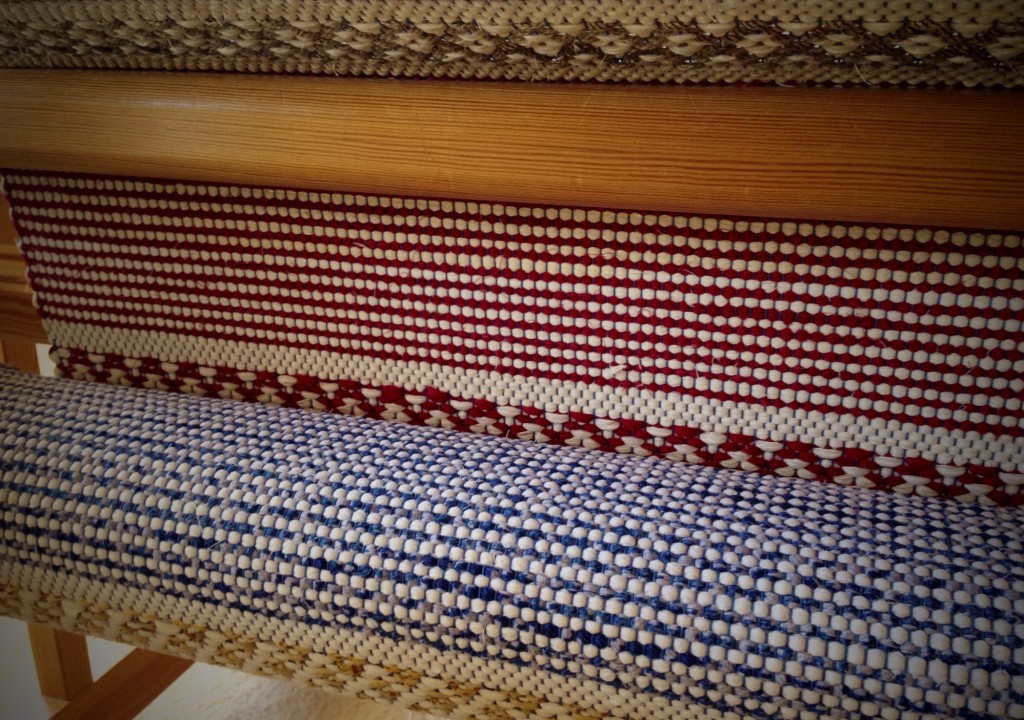
The end is the beginning. The end of the warp means the rugs are ready to be unrolled from the cloth beam.
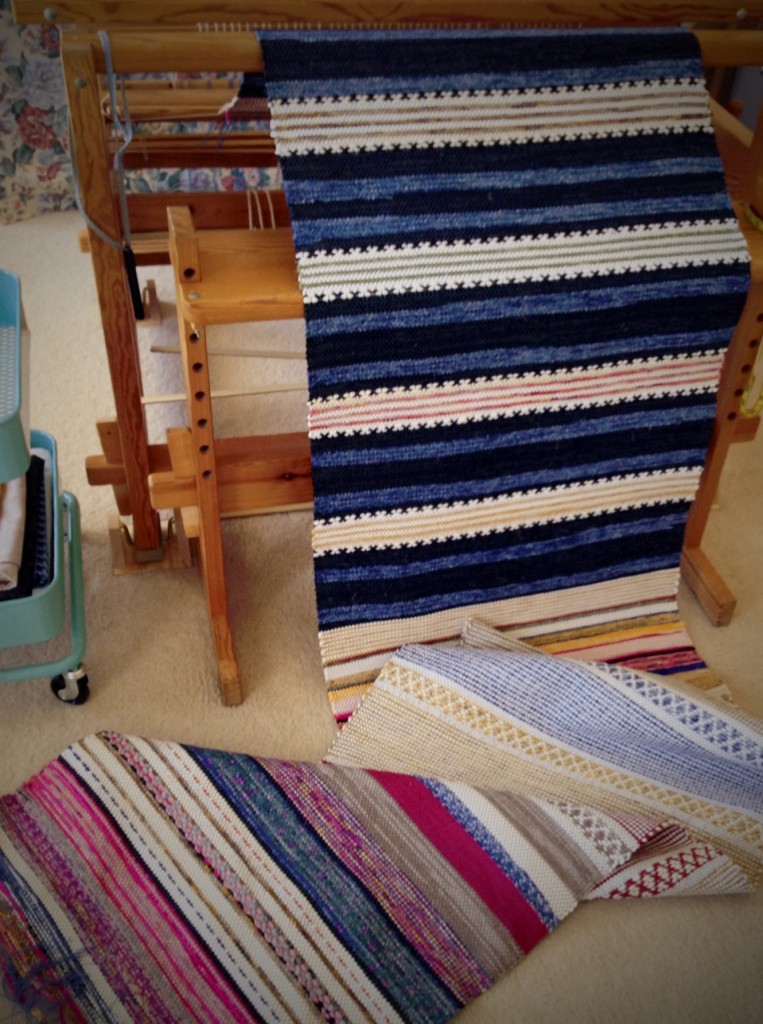
Rosepath rag rugs being unrolled and cut from the loom. This always feels like the moment of truth: I ask myself, “How do they look?” (Note, this view is the underside of the rugs.)
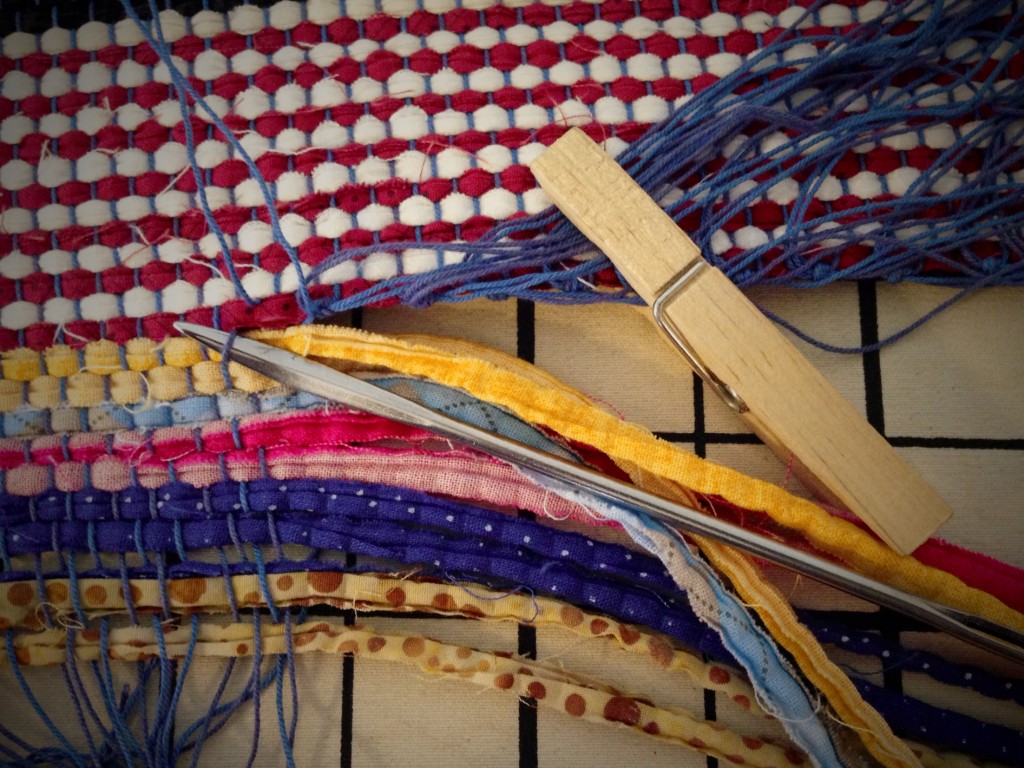
Step 1. An upholstery needle helps separate warp ends from the header. A clothespin keeps finished ends out of the way.
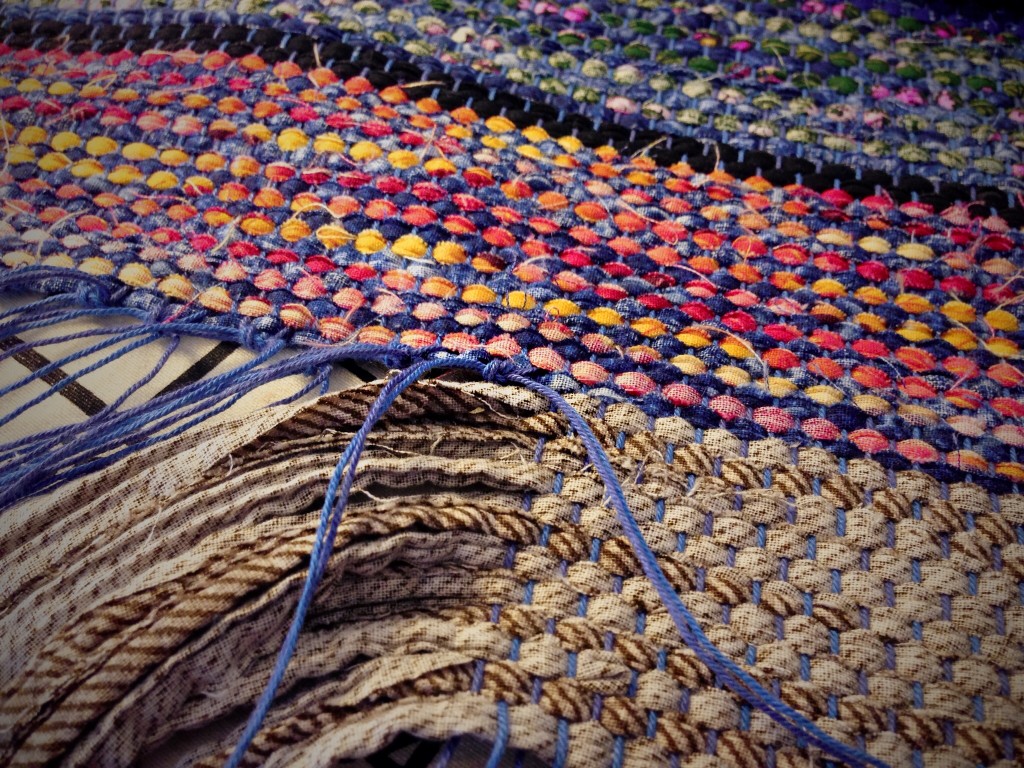
Step 2. Secure the hem with square knots. Four ends at a time, pulled out of the header, are firmly tied into knots.
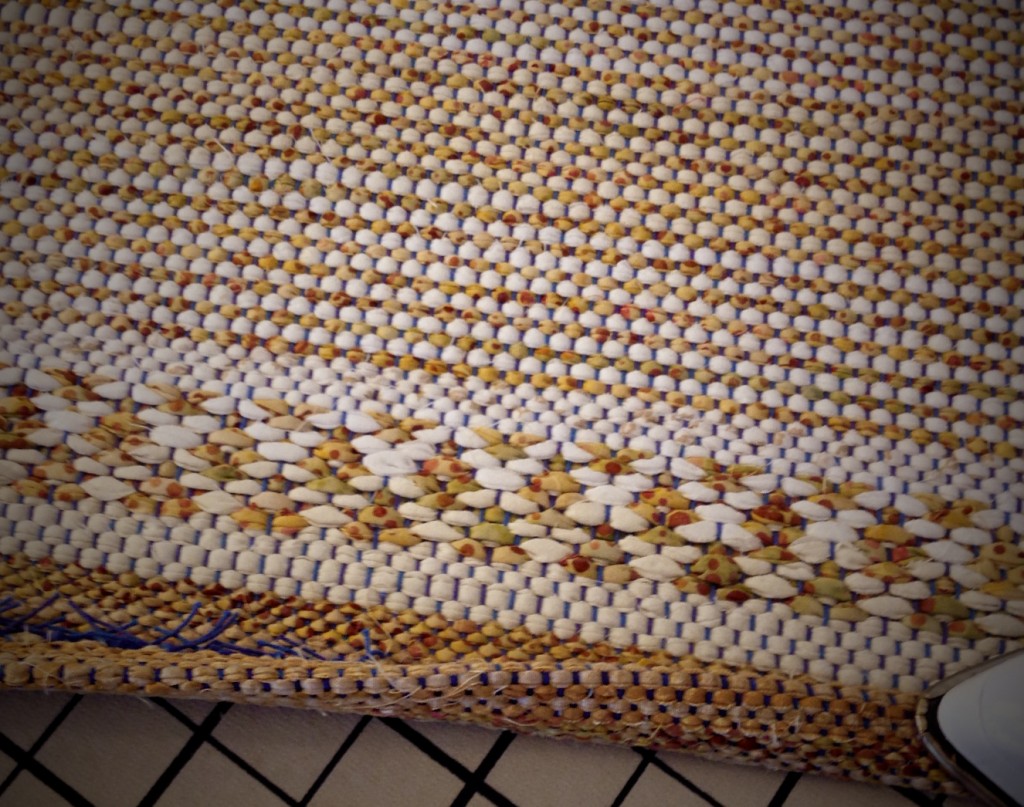
Step 4. Fold hem edge to the back side of the rug, keeping the knotted ends inside the fold. Press. Fold again to complete the turned hem. Press.
| –убрики: | в€зание:прихватки,коврики |
ѕонравилось: 2 пользовател€м
| омментировать | « ѕред. запись — дневнику — —лед. запись » | —траницы: [1] [Ќовые] |

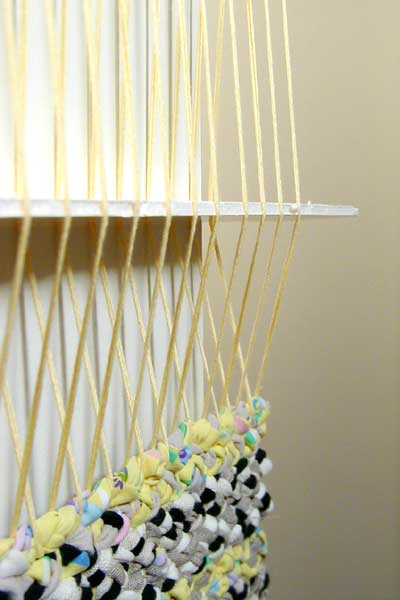

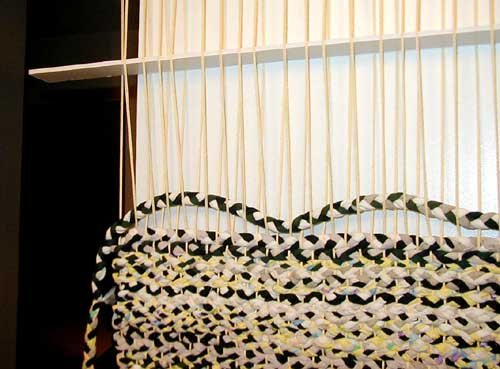
















 ==============
==============
 ==================
==================

 ==================
==================









 \
\











